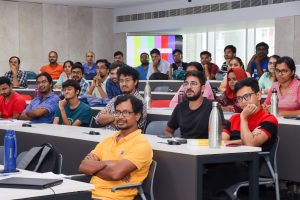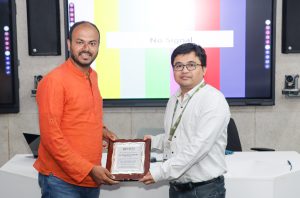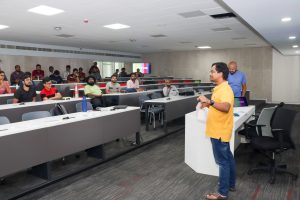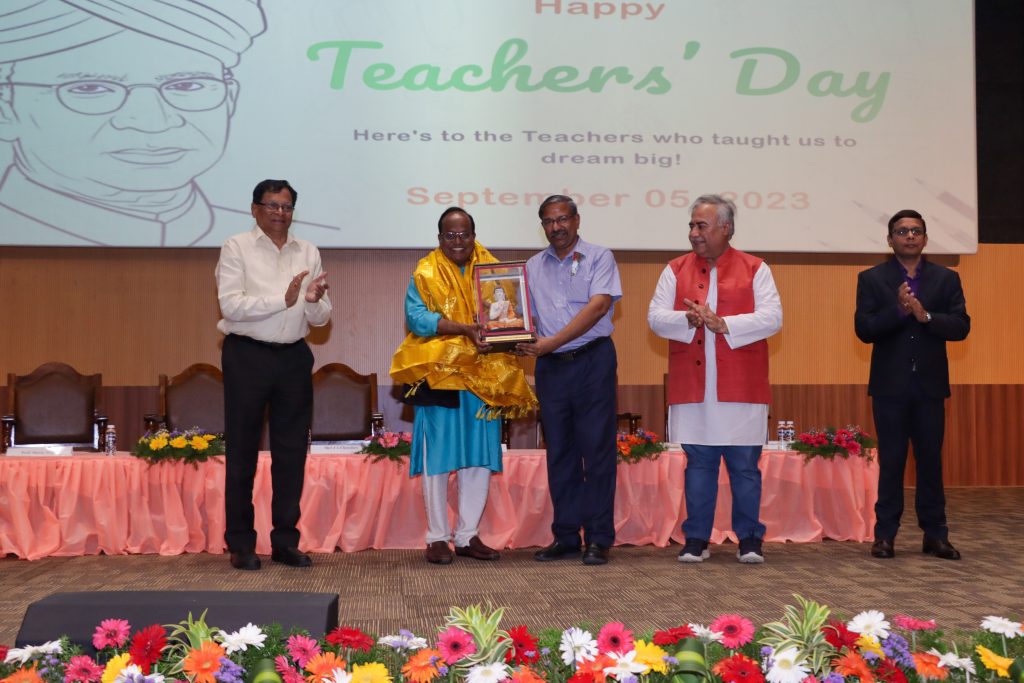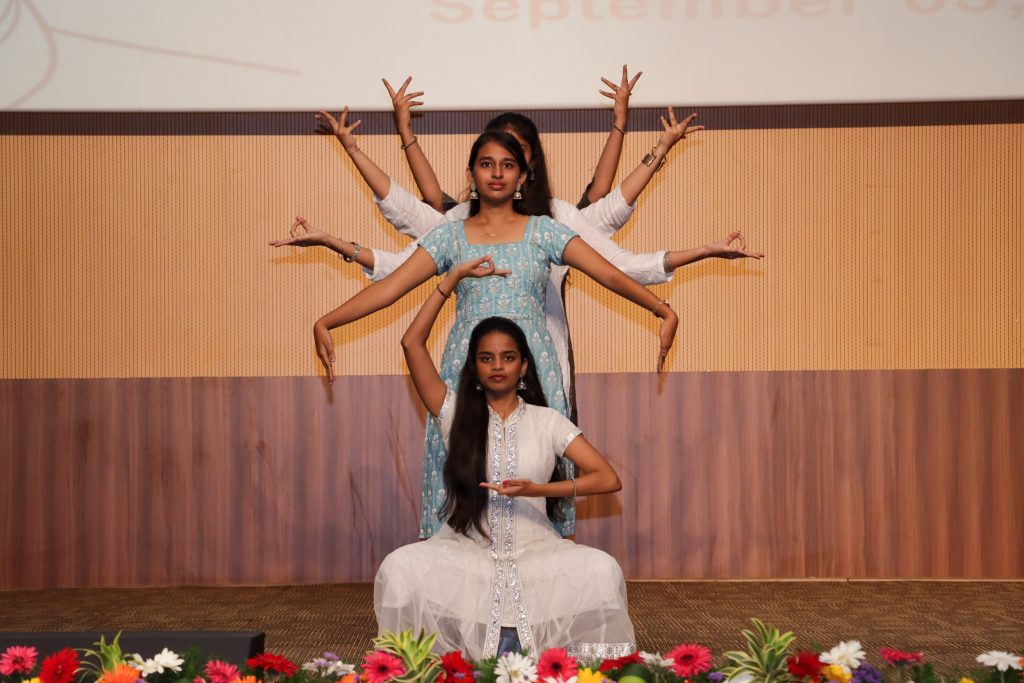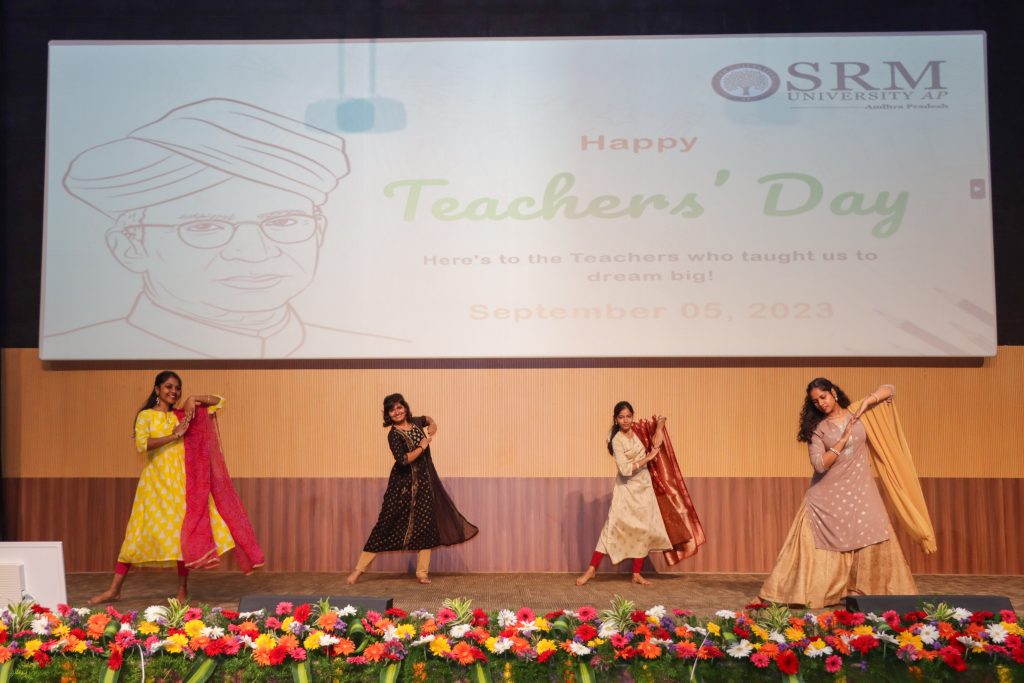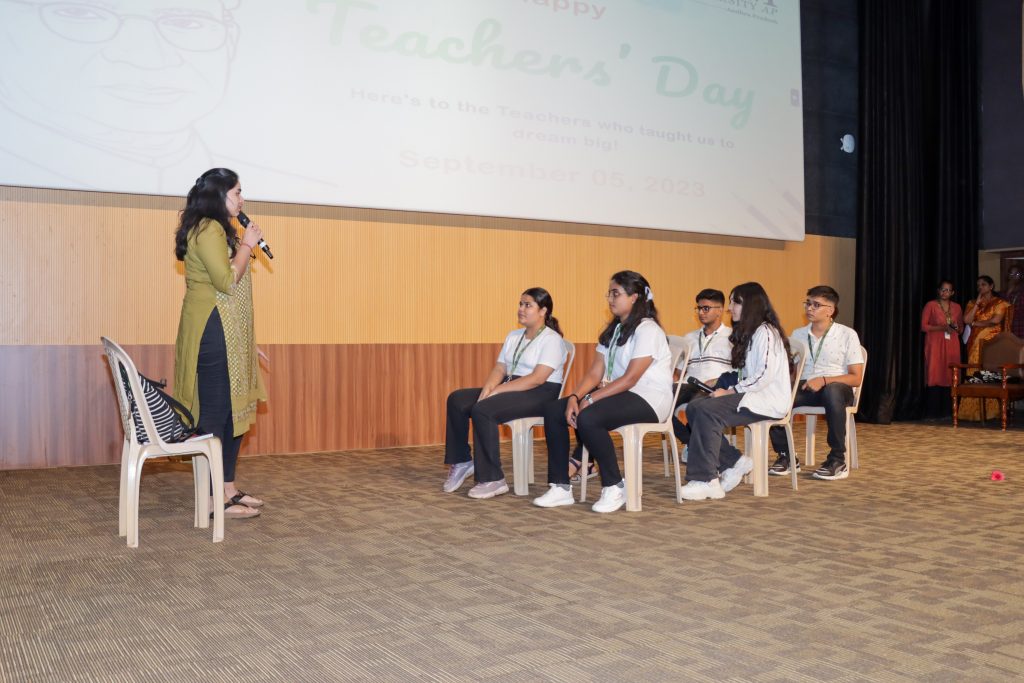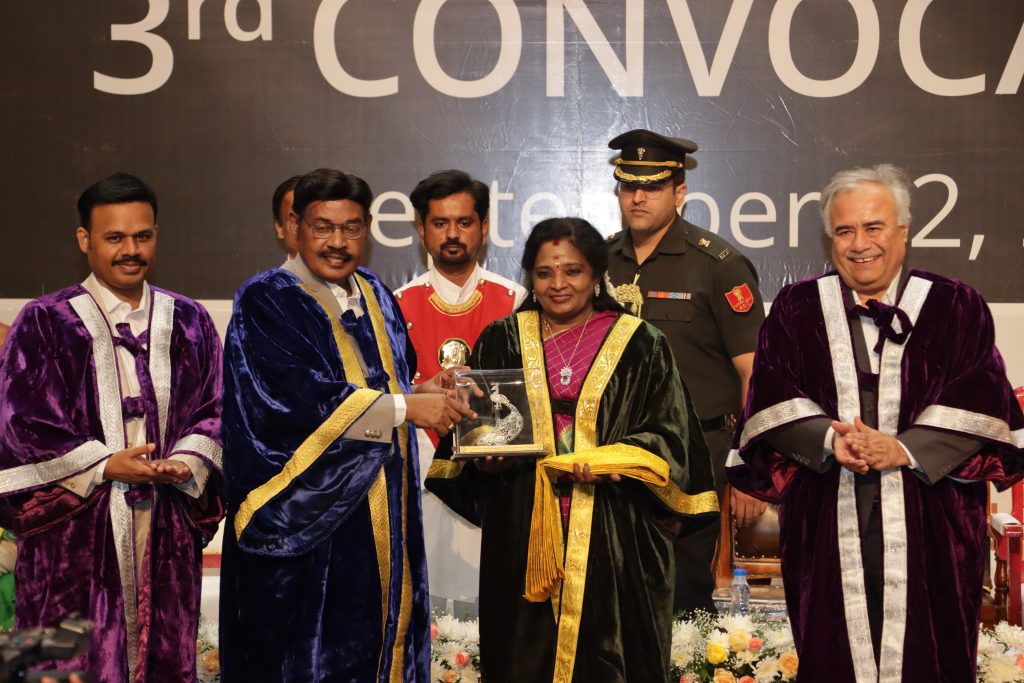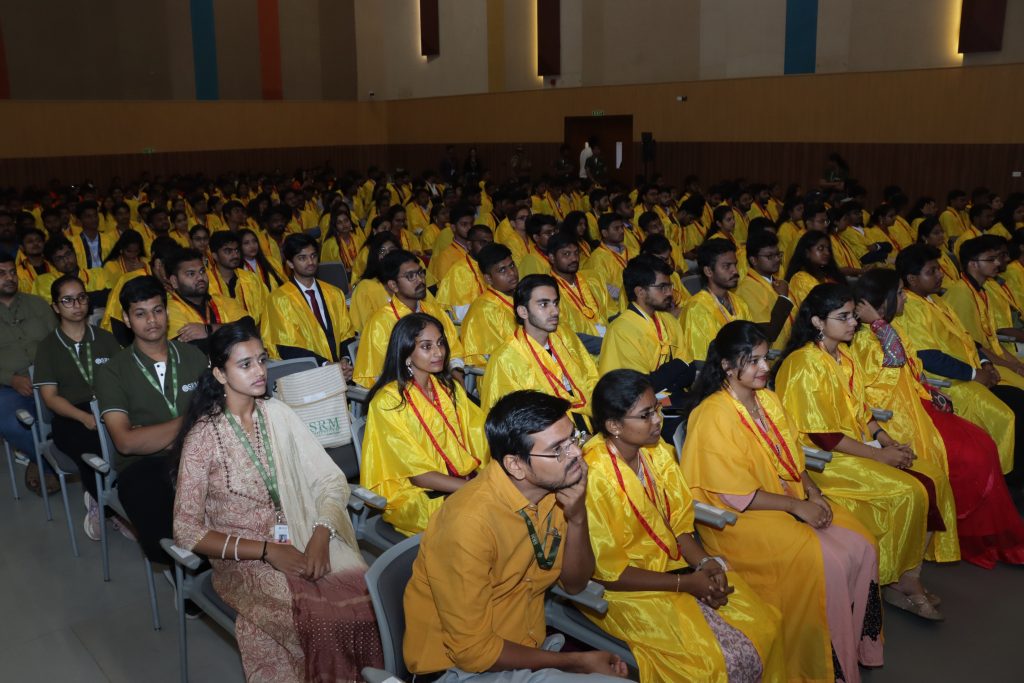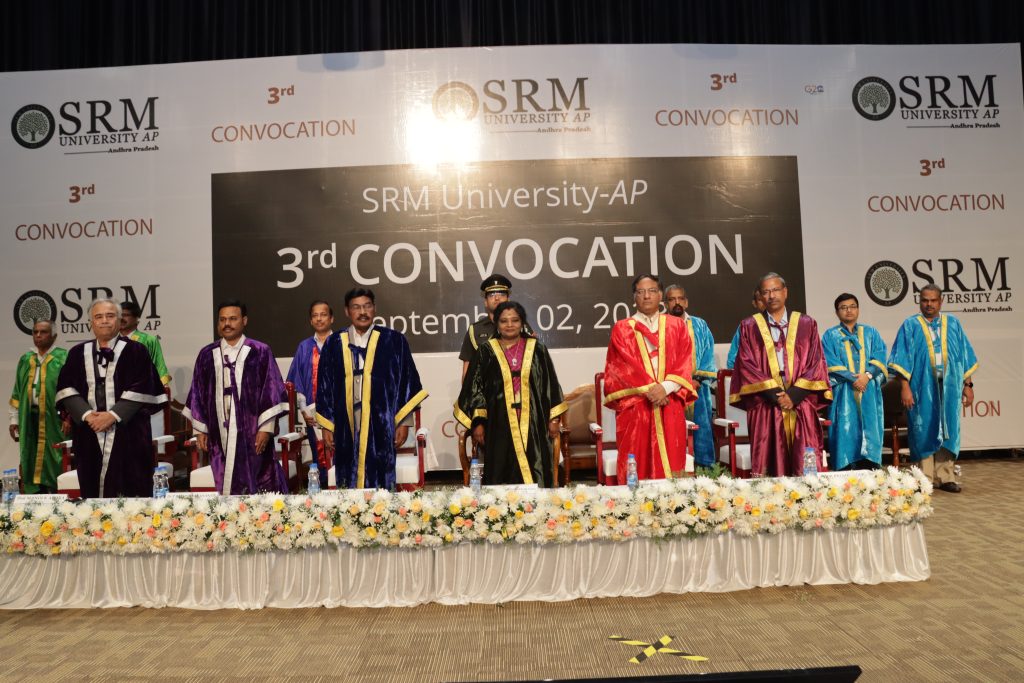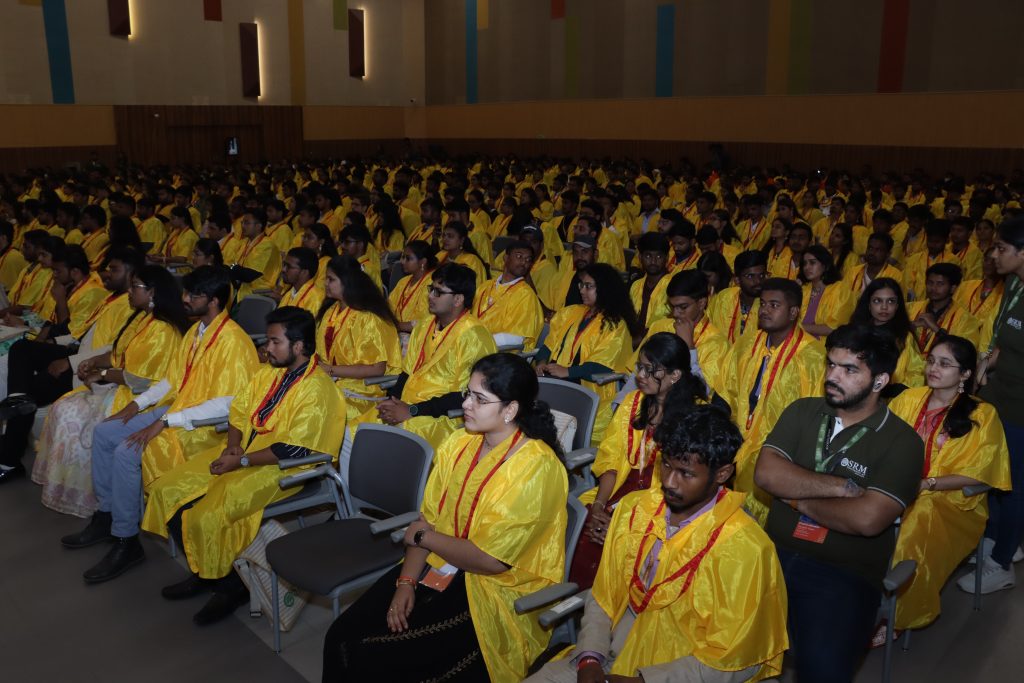SRM University-AP hosted AIS School on p-adic methods in Arithmetic
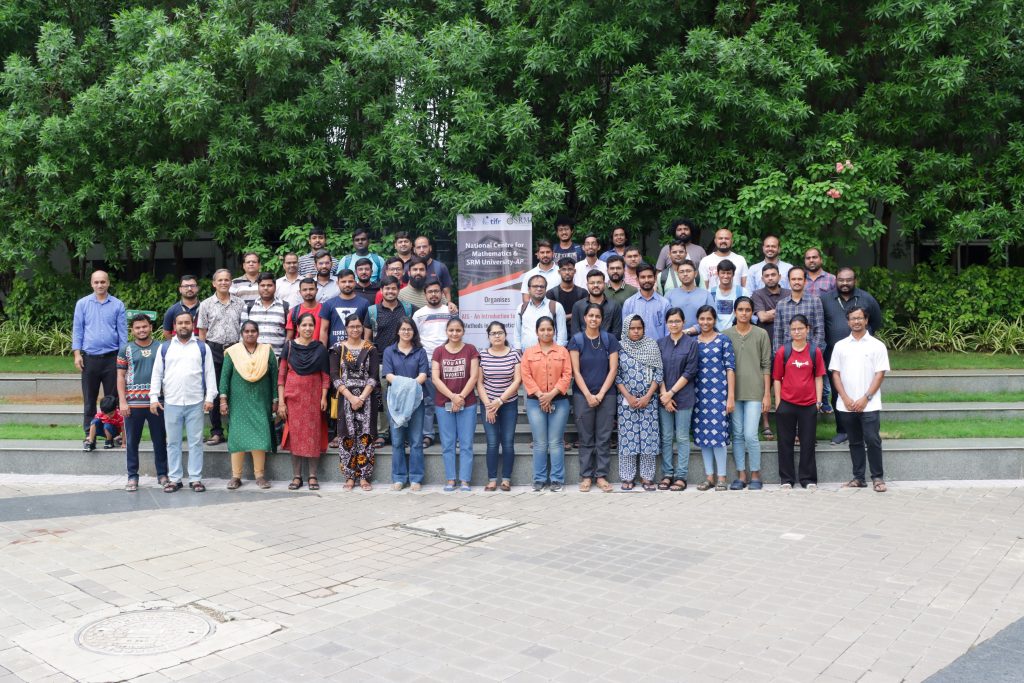
The Department of Mathematics, in collaboration with the National Centre for Mathematics, organised an AIS school on p-adic methods in Arithmetic from June 26 to July 15, 2023 at the campus. Over 58 students, research scholars, post-doc fellows and faculty from reputed universities such as IIT Hyderabad, IIT Guwahati, IISER, University of Hyderabad, Pondicherry University, Banaras Hindu University etc. participated in the three-week-long AIS school, which was conducted with the prime objective to study the p-adic numbers and the p-adic methods in arithmetic.
Prof. C S Rajan, Ashoka University; Dr Manish Kumar Pandey and Dr Sazzad Ali Biswas, SRM University-AP; Dr Amiya Kumar Mondal, IISER Berhampur; Dr Santosh Nadimpalli, IIT Kanpur; Dr Shaunak Deo, IISc, Bangalore; and Dr Mihir Sheth, Post-Doc, IISc, Bangalore were the speakers at the school. The sessions were delivered in collaboration with course associates /tutors. Dr Arindam Jana, Postdoc, TIFR Mumbai; Dr Ravitheja Vangola, Postdoc, IISC Bangalore; Mr Sagar Shrivastava, Mr Manodeep Raha, and Mr Niladri Sekhar Patra, PhD scholar, TIFR Mumbai were the tutors mentoring the participants.
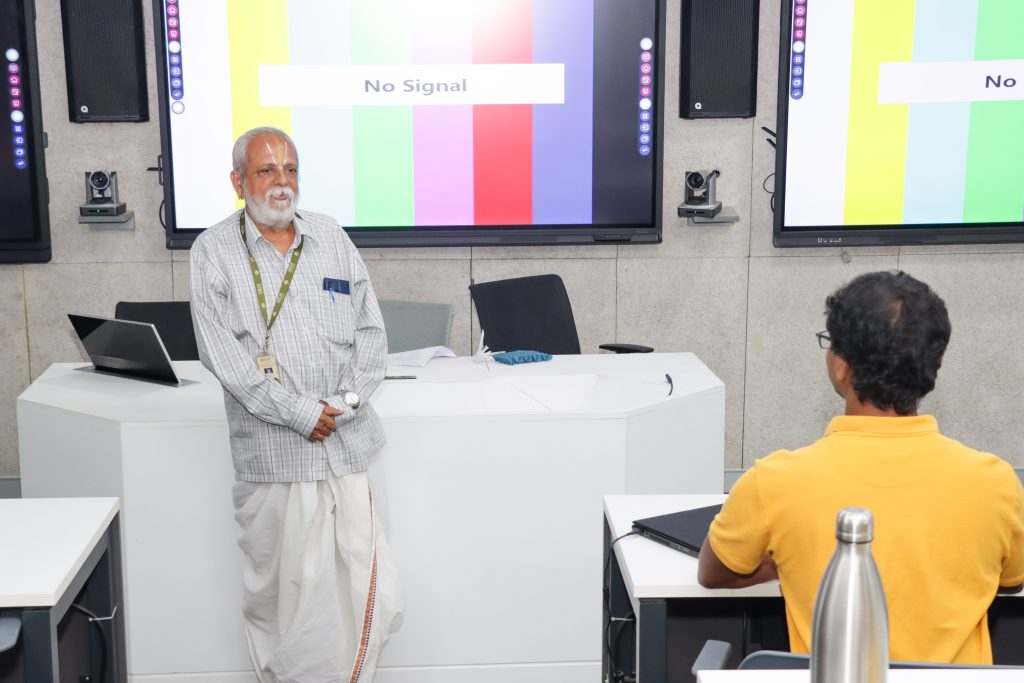
Prof. C S Rajan delivered 9 lectures – four lectures in the first week of the programme and five lectures at the end of the programme. The first part of his session covered topics such as Hensel’s Lemma and Local-Global Principle while the latter part focused on the Main Conjecture of Iwasawa Theory and Introduction to the work of Ribet (Converse to Herbrand) and subsequent work.
Dr Sazzad Ali Biswas offered his insights on topics like Construction of p-adic numbers, Various Properties (algebraic and Analytic) of p-adic numbers, Arithmetic operations of p-adic numbers and Local-Global Principle in five sessions. Dr Manish Kumar Pandey gave two lectures on the Special values of the Riemann zeta functions.
Local Fields, Global Fields and p-adic algebraic numbers were the focal points of the four lectures delivered by Dr Mihir Sheth. Dr Amiya Kumar Mondal took five lectures on Modular Forms and Dr Santosh Nadimpally gave five lectures on the Construction of p-adic zeta functions and the Various properties of p-adic Zeta function. Dr Shaunak Deo dealt with topics including Cyclotomic Fields, Iwasawa’s Construction of p-adic L-fucntions and p-adic Family of Modular Forms through six lectures.
The AIS School was organised by Prof. C S Rajan of Ashoka University and Assistant Professors Dr Manish Kumar Pandey and Dr Sazzad Ali Biswas of the Department of Mathematics at SRM University-AP. The programme successfully concluded with the active participation of students, scholars and faculty who assembled to exchange constructive discourse on p-adic methods in Arithmartics.
- Published in Departmental News, Math News, News
Faculty Honoured for Outstanding Services on Teachers Day Celebration
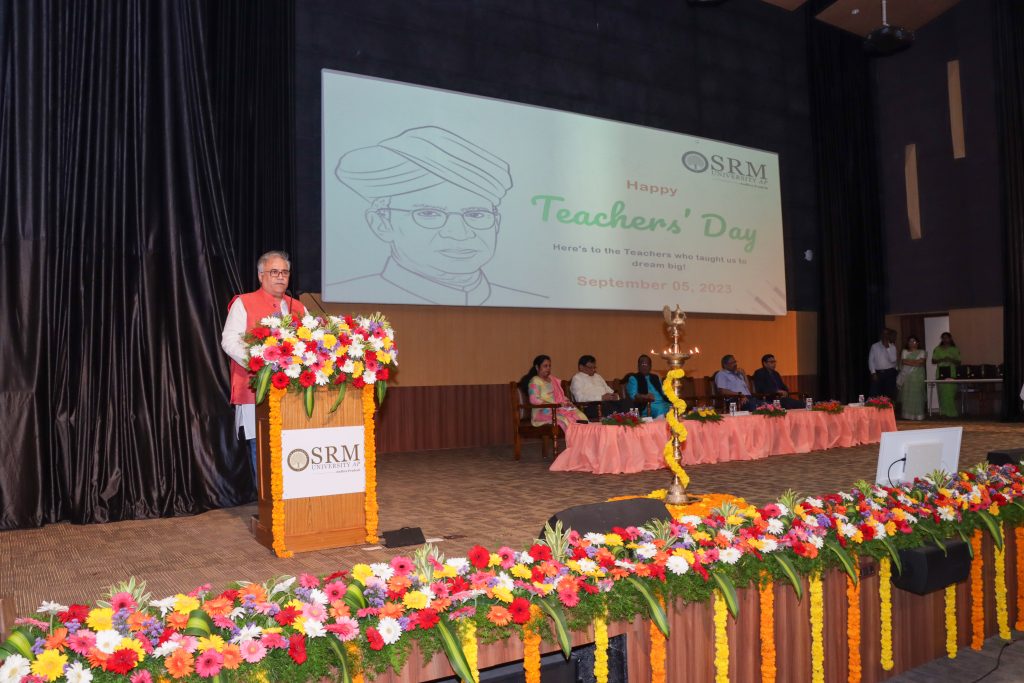
SRM University-AP enthusiastically joins the global flare of Teachers’ Day festivities, to honour and appreciate the incredible services of the teaching community. Students and staff of the varsity joined hands to put forth a heartfelt tribute to their exemplary services.
The programme saw the participation of Mr J A Chowdary as the distinguished Chief Guest for the event. Mr Chowdary is an Entrepreneur, Technology Leader and Innovator and is credited as one of the key architects of the HI-TECH City and Cyberabad in Hyderabad and in founding the International Institute of Information Technology Hyderabad (IIITH), and the International Institute of Digital Technologies (IIDT) at Tirupati.
During the occasion, Vice Chancellor, Prof. Manoj K Arora cited, “We are moving from the role of teachers to that of mentors and facilitators”. He took the opportunity to enlist the core values of the university, namely Show Compassion, Develop Trust, Give Mutual Respect, Create a sense of Curiosity, Serve with Integrity and Instil Social Responsibility and encouraged the faculty to align themselves to the same. Prof. Arora also announced five prominent awards for the Research Day to be held on November 17, 2023. The awards will be given out in the categories of Best Experimental Researcher, Best Theoretical Researcher, Best Industrial Researcher, Best Social Researcher and Best Young Researcher Award.
Chief Guest, Mr J A Chowdary spoke in his address on India as a land of opportunities for startups. He stated, “Most jobs in future are going to be automated and existing jobs will disappear.” In an interactive session with students, the guest also quoted that startup failures in Silicon Valley are irrelevant to India’s scenario, as for today, 9 out of every 10 startups are successful.
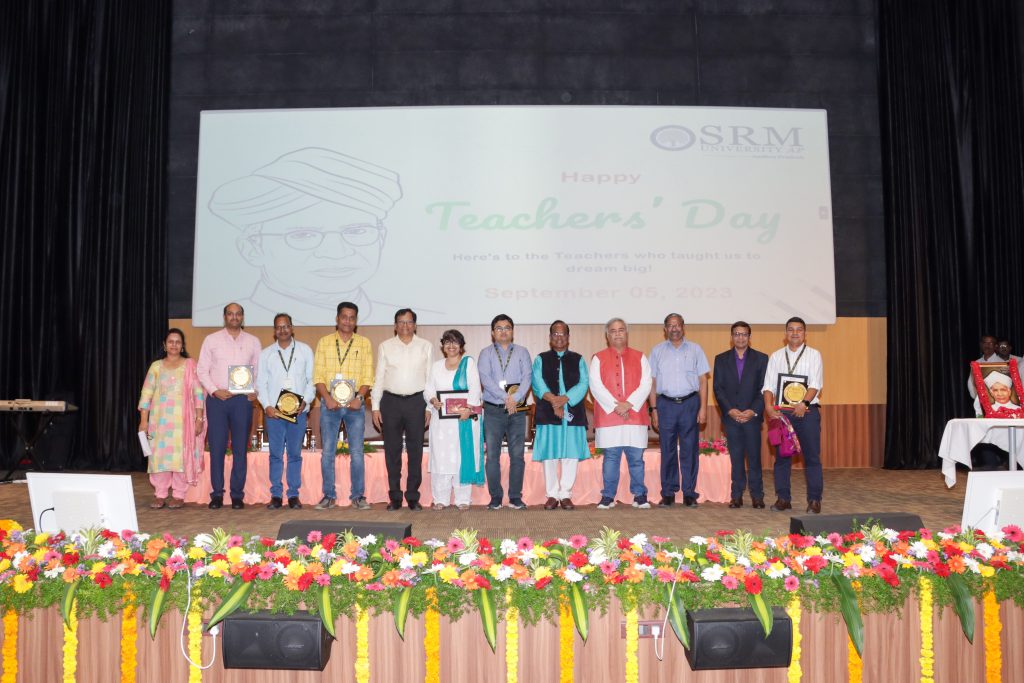
The event also saw the announcement of the Outstanding Teacher Awards. Prof. Ranjit Thapa, Dean i/c-School of Engineering and Sciences and Dean-Research; Dr V M Manikandan, Assistant Professor, Department of Computer Science and Engineering; Dr Jatindra Kumar Dash, HoD, Department of Computer Science and Engineering; Dr Murali Krishna Enduri, Assistant Professor, Department of Computer Science and Engineering; Dr Srabani Basu, Associate Professor & HoD, Department of Literature and Languages; and Dr Karthik Rajendran, Associate Dean-Quality and Assurance Rankings & HoD, Department of Environmental Science and Engineering were honoured with the Outstanding Teacher Awards. The award recipients were also seen delivering an acceptance speech and expressing their gratitude to the varsity and students.
The ceremony witnessed the varsity awarding the Five Year Services Award to its dedicated employees. The event concluded with students putting up beautiful performances for their beloved teachers and other memorable moments.
- Published in News, University Event
Research on Tribal Communities Receives Green Flag from ICSSR
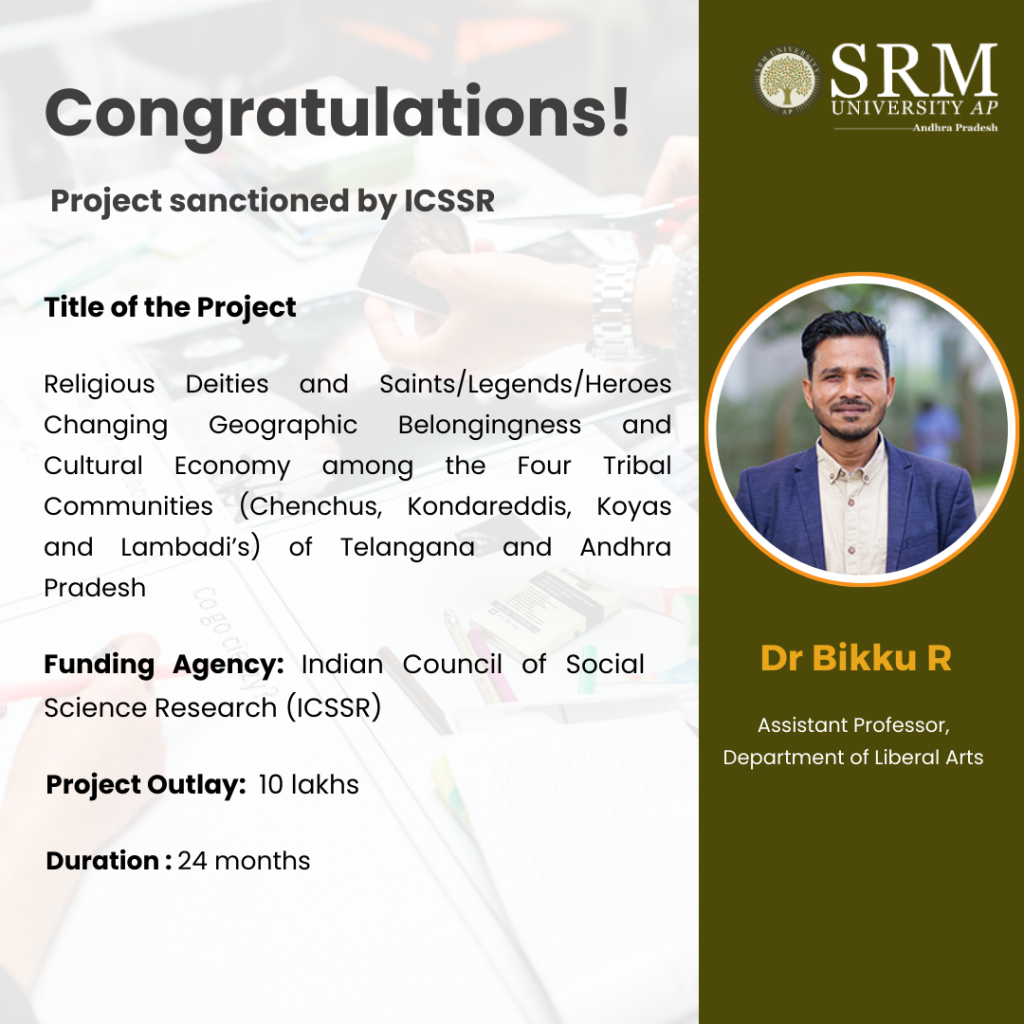
SRM University-AP proudly announces that Dr Bikku R, Assistant Professor at The Department of Liberal Arts has been sanctioned a major research project by the Indian Council of Social Science Research (ICSSR). The research project titled “Religious Deities and Saints/Legends/Heroes Changing Geographic Belongingness and Cultural Economy among the Four Tribal Communities (Chenchus, Kondareddis, Koyas and Lambadi’s) of Telangana and Andhra Pradesh” will receive an outlay of Rs. 10.00 Lakhs.
Congratulations, Dr Bikku on this outstanding achievement!
Research Abstract
India is one of the most diverse countries in the world, where around 705 scheduled tribes are notified with their distinct culture, and as per the 2011 census, they constitute 8.6% of the total population. Out of these, 75 communities belong to Particular Vulnerable Tribal Groups (PVTGs), having declining or stagnant populations, low literacy rates, pre-agricultural technologies and economic backwardness. For tribal communities, culture, economic, political and geographical belongingness are distinct from non-tribals in India. Studying their religious beliefs and practices and changing cultural economies and landscapes is crucial to preserving India’s diverse cultures. The existing studies by social scientists have not emphasised much on tribal saints/ heroes, changing cultural economies and landscapes in India, particularly in the newly bifurcated southern states, Telangana and Andhra Pradesh. The study focuses on religious deities and Saints/Legends/Heroes, changing geographic belongingness and cultural economies among the four tribal communities (Chenchus, Kondareddis, Koyas and Lambadis) of Telangana and AP states of India. Qualitative (ethnographic) and quantitative methods will be used to map their deities and saints/legends/heroes, cultural economy and traditions and record memories of past and contemporary relationships with the belonging to their landscapes and natural resources.
- Published in Departmental News, Liberal Arts News, News, Research News
Hon’ble Governor of Telangana Felicitates Graduates at the 3rd Convocation Ceremony
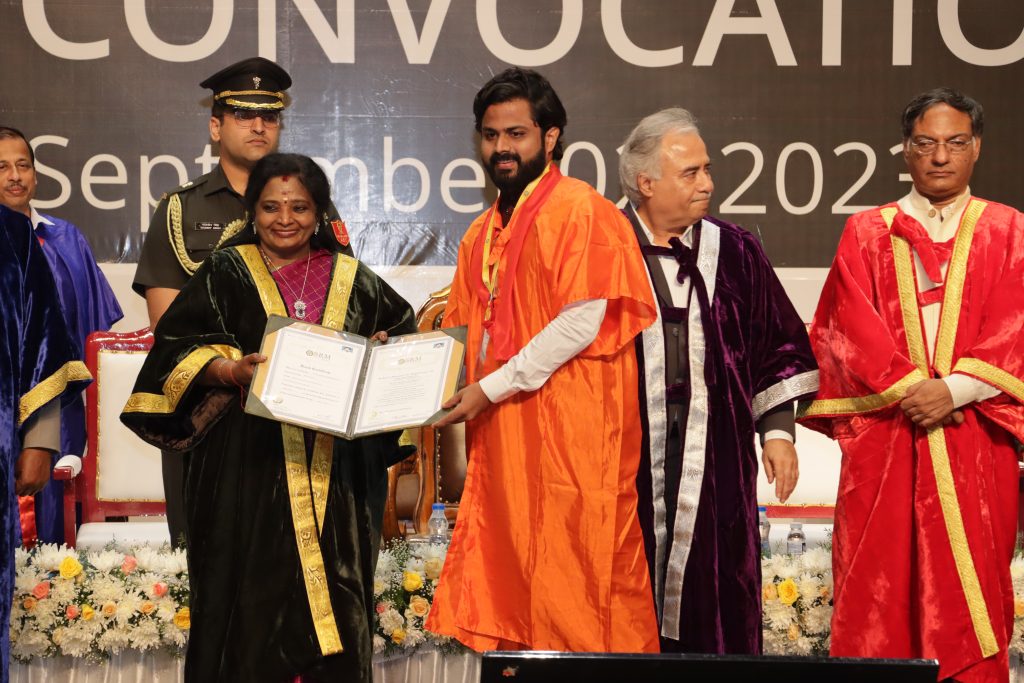
“Education provides you confidence. Sharpen your skills each passing day and visualise the development of your nation. Learn more than expected and earn more than expected is the ideology that we live by today”, Her Excellency Dr Tamilisai Soundararajan, Hon’ble Governor of Telangana, the chief guest of the 3rd Convocation Ceremony of SRM University-AP remarked while addressing the graduating Class of 2023.
The university has conferred the prestigious degrees to the Graduate Class of 2023 at the 3rd Convocation Ceremony on September 02, 2023, in the august presence of Guest of Honour, Prof. Ashutosh Sharma, President-Indian National Science Academy; Dr T R Paarivendhar, Founder Chancellor, SRM Group of Institutions; Dr P Sathyanarayanan, Pro-Chancellor; Prof. Manoj K Arora, Vice Chancellor, SRM University-AP; Other dignitaries; Deans of all schools, faculty, staff and parents of the graduating batch. A remarkable 883 graduates, including 13 PhD scholars, 17 Gold medallists, 6 Silver medallists and 2 Bronze medallists were awarded their degrees at the momentous ceremony held at the APJ Abdul Kalam Auditorium.
“In our objective of being globally connected, nationally relevant and regionally transformative university, we have adopted a five-year strategic plan with five goals – Achieve academic excellence, Intensify research, innovation and entrepreneurial spirit, Enhance student experience, Attain financial sustainability and Improve perception and visibility”, stated Vice Chancellor, Prof. Manoj K Arora in his welcome address. During his briefing about the annual report, Prof. Arora also highlighted the placements excellence of the past academic year. He commented, “In the last academic year, we have witnessed 100% placements with the highest package being 45 LPA and average salary of 9 LPA which is a 25% increase from last year. 15 students have received international offers from countries such as USA, Australia, Japan, Sweden etc. As we host the 3 rd convocation of the institute, we are proud to say we are a young university with 1500 alumni, of which 34% of them are working in Fortune 500 companies, 17% are studying abroad, 7 have their own startups.”
Founder Chancellor, Dr T R Paarivendhar, in his address to the young graduates, commented that India’s first solar launch, Aditya L1 and our country’s presidency over the G20 summit coincided with the students’ graduation and encouraged them to strive for excellence with love for family, their alma mater and country in their hearts. “Success in life needs to be balanced with philosophy and spirituality. SRM University-AP has prepared you for the transition of student to alumni, by imparting knowledge and the skill to learning how to learn. Use the skills you have acquired to pursue prosperity and contribute to the growth of society”, advised Pro-Chancellor, Dr P Sathyanarayanan on this milestone event.
The university also conferred an Honorary Doctorate to Prof. Ashutosh Sharma, esteemed Guest of Honour by the Founder Chancellor, Dr T R Paarivendhar and Hon’ble Governor for his exemplary contributions to the field of sciences. “Success and inclusive development is going to be a global challenge. As we continue to progress at an unprecedented pace, remember that new knowledge is no knowledge without using it for socio-economic good” stated Prof. Sharma in his address. He deeply appreciated how research is ingrained into the very fabric of the varsity’s educational approach assuring research opportunities to the young researchers of our country.
The convocation ceremony successfully concluded with the administration of the pledge by the graduation cohort, honouring the national anthem and the departure of the dignitaries.
- Published in News, University Event


